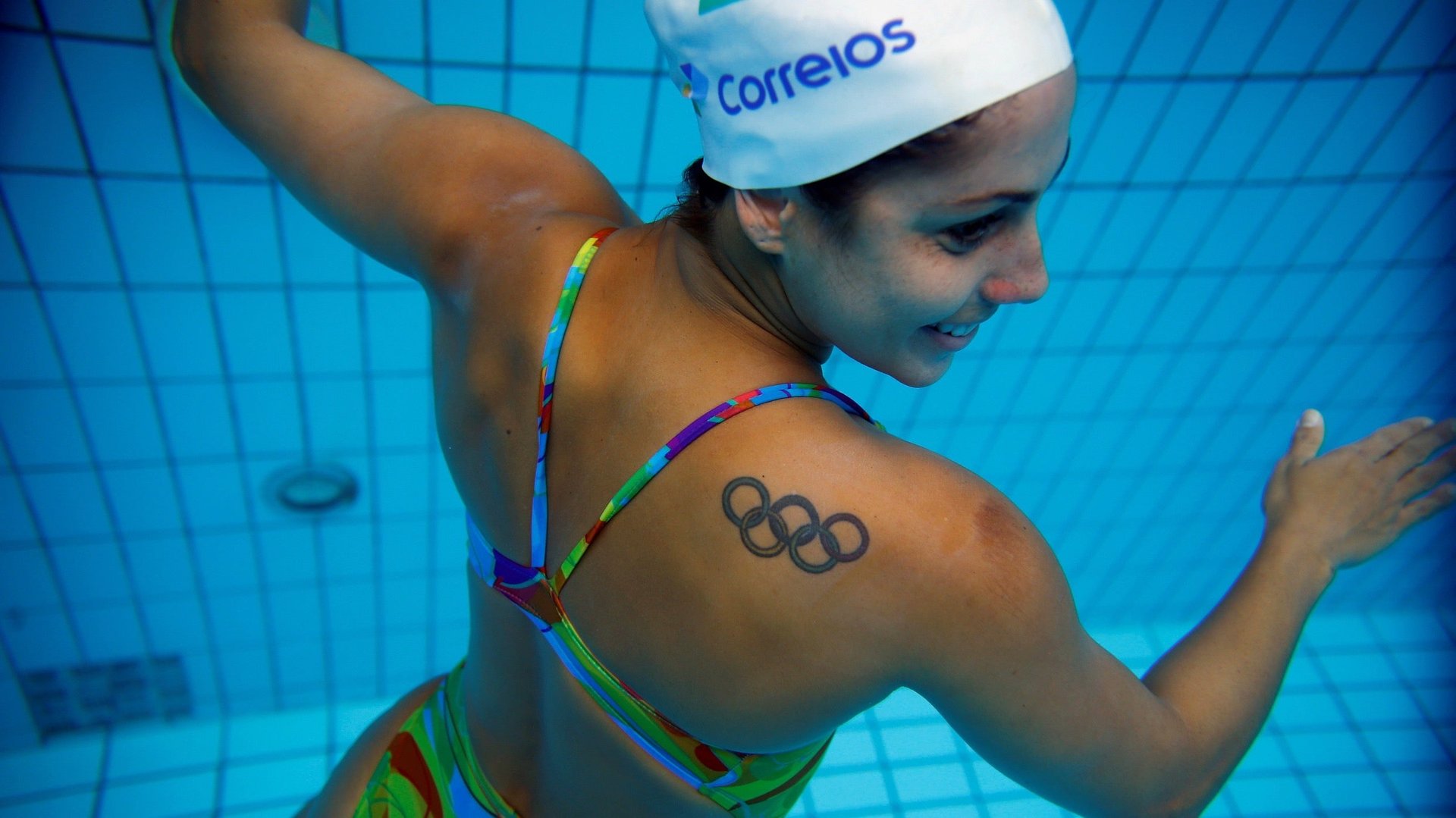Photos: Athletes in Rio are sporting a favorite tattoo at the Olympic games
Olympic athletes don’t just earn their stripes; they earn their rings.


Olympic athletes don’t just earn their stripes; they earn their rings.
Many athletes this year are sporting the Olympic rings as a tattoo. Technically, the five rings are a commercial brand, which normally would be banned under “rule 50” of the International Olympics Committee’s rulebook. That rule prevents athletes from flaunting any kind of branding. Indeed, at the 2012 London games, Olympian Nick Simmonds was forced to cover a temporary tattoo from T-Mobile that the phone company had paid $21,800 for him to wear. When it comes to the rings, however, Olympic officials make an exception.
“The IOC President is always excited to see athletes with the Olympic Rings,” a spokesperson told Quartz in an e-mail. “Standing alone, the Olympic Rings are a great expression of appreciation of the Olympic Games and of the Olympic Values.”
At the Los Angeles Olympic Games in 1984, swimmer Victor Davis tattooed a Canadian Leaf and the Olympic rings over his heart—a design aped by others from his country, like swimmer Brent Hayden. Colombia’s BMX rider Mariana Pajon, Brazil’s field hockey player Matheus Borges, USA boxer Queen Underwood, and Australian swimmer Stephanie Rice are among the many who have flaunted the rings.
This year, the trend is continuing.
Team Great Britain
Tom Daley, Diving (bicep)
Team India
Jwala Gutta, Badminton (upper back)
Manu Atri, Badminton (forearm)
Team Brazil
Lara Teixeira, Swimming (upper back)
Team France
Renaud Lavillenie, Pole Vault (forearm)
Team USA
Missy Franklin, Swimming (upper thigh)
Dana Vollmer, Swimming (lower back)
Ryan Lochte, Swimming (bicep)
Elizabeth Beisel, Swimming (upper thigh)